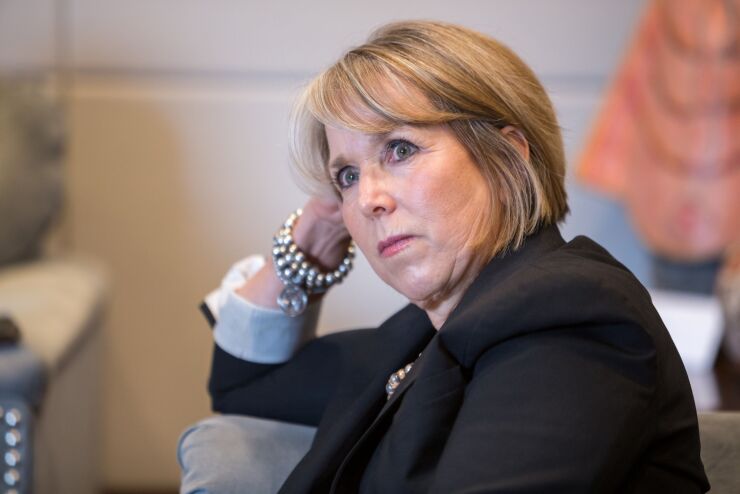Guam and other U.S. territories struggling with market access may become eligible to use the Federal Reserve’s Municipal Liquidity Facility.
During a House Financial Services Committee hearing Thursday, Guam Gov. Lourdes Leon Guerrero said she wants her territory to be eligible for the MLF and that she has been told the Fed is now considering the request. The MLF is authorized to buy up to $500 billion of short-term notes from issuers eligible under its terms.
“Unfortunately, as I understand it, the language as adopted leaves out the U.S. territories, including Guam,” Leon Guerrero said. “Because of this, I immediately wrote to the Chairman of the Federal Reserve, Jerome Powell, and U.S. Treasury Secretary Steven Mnuchin on April 13th , and Congressman Michael San Nicolas on April 14th to request Guam’s inclusion in the program. I am certainly pleased to hear that this request is now being considered."
The MLF is open to counties with populations of 500,000 or more and cities of 250,000 or more. In June, the central bank allowed U.S. states to be able to have at least two cities or counties eligible to directly issue notes through the MLF regardless of population. Governors of each state are also now able to designate two issuers whose revenues are derived from activities such as public transit and tolls. Territories like Guam and Puerto Rico are not eligible.
Guam is already junk-rated and facing further financial pressure due to the coronavirus pandemic. At the end of May, Moody’s Investors Service confirmed Guam’s Ba1 rating with a negative outlook.
“The Ba1 rating incorporates Guam's above-average exposure to the economic and fiscal effects of the current coronavirus pandemic due to the importance of international tourism in the territory's economy, a significant accumulated general fund deficit, and debt levels which, while below those of other territories, are significantly above U.S. state medians,” Moody’s analysts wrote.
Guam’s government revenues in fiscal year 2019 rose enough to cut its deficit in half, but now revenues could see a 7.2% decline in FY 2021, Leon Guerrero said.
“This means dangerous cuts to our local public health agency operations, drastic cuts to public safety, and potentially draconian cuts to local education,” Leon Guerrero wrote in her testimony. Bold congressional action is needed, she added.
Aid to states and localities has been heavily debated over the past few months. In May, House Democrats passed their $3.5 trillion HEROES act that includes $915 billion in direct aid for state and local governments. Senate Republicans introduced a $1 trillion emergency relief package in late July that would have given states more flexibility to use existing funding, but not additional direct aid.

New Mexico Gov. Michelle Grisham said during the hearing that her state spent more than $400 million on direct COVID-19 costs including testing supplies, and that it faces a nearly 20% decline in general fund revenues year-over-year.
For months since the CARES Act, the National Governors Association has asked for an additional $500 billion for states. The CARES Act, enacted in March, established a $150 billion Coronavirus Relief Fund to disburse $8 billion to tribal governments, $3 billion to territories and the District of Columbia and the remaining $139 billion to states as well as counties and cities with populations of over 500,000. Those funds can only be used to cover COVID-19 related expenses.
However, Treasury data as of June 30 indicates that about 25% of the $142 billion in funds had been distributed.
“Democrats are using this hearing to claim that states are struggling, but it certainly isn’t due to the lack of funding,” said Rep. Patrick McHenry, R-N.C.
“Republicans believe that any additional support should be based on data and directly related to COVID,” McHenry added.
McHenry asked Dr. Douglas Holtz-Eakin, a witness and president of the American Action Forum what additional federal support states and localities need.
Holtz-Eakin said the Fed’s MLF should be used and that it’s underutilization is a “mystery.” Only two issuers, Illinois and New York's Metropolitan Transportation Authority, have used the program so far. He also said states need to be able to “operate in the presence of the virus,” such as reopening schools safely.





